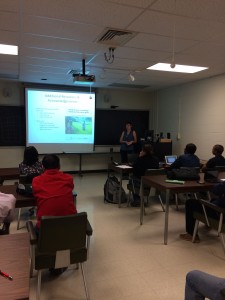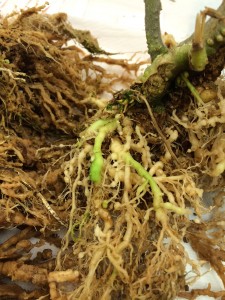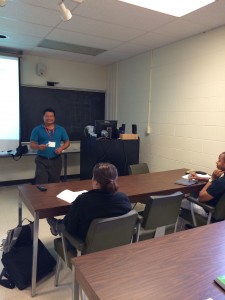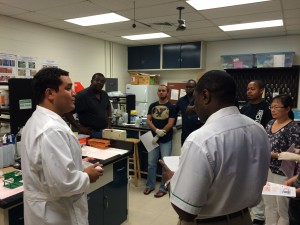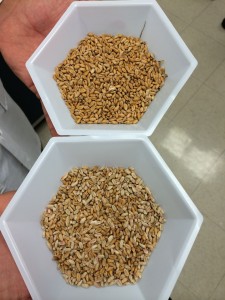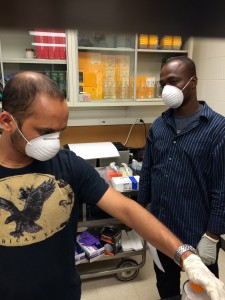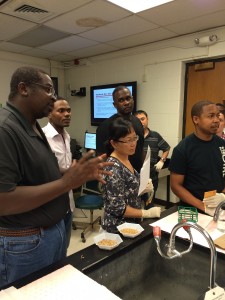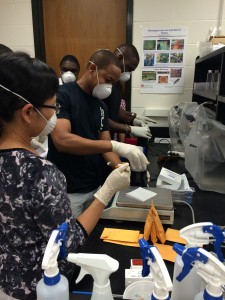Day 10 was a very busy day, beginning with a lecture on nematode pest identification by Ellie Walsh, a senior Ph.D. student in Dr. Chris Taylor‘s lab. Dr. Taylor was also on hand to answer questions after the lecture and during the nematode identification lab that followed. Grad students Tim Frey, Krystel Navarro and Rachel Medina, and staff member Theresa Miller led the participants in exercises to practice extraction, staining and identification of plant pathogenic nematodes including root knot nematode (Meloidogyne) from tomato and bloat nematode (Ditylenchus) from leek.
In the afternoon Hemiptera:Homoptera took center stage as Dr. Cañas led a case study session on identification of these pests, using microscopy and internet tools to key in on diagnostic morphological characteristics.
Finally, Dr. Pierce Paul and postdoc Dr. Jorge Salgado conducted a case study on mycotoxin contamination of cereals, including practice with a test kit to identify and quantify these toxic compounds. Moldy wheat seeds infected with Fusarium graminearum were tested for deoxynivalenol (DON; vomitoxin) using Reveal Q+, a commercial kit. Non-moldy grain was also tested.
